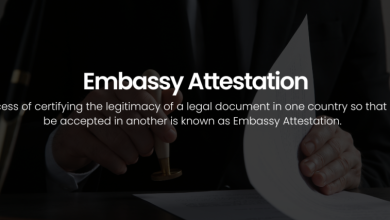Why Historic Heritages In Crisis And How To Protect Them
Governments may not always appear to prioritize historic heritages for several reasons:
Resource Allocation:
Governments often have limited resources, and they must allocate funds to various sectors, including healthcare, education, infrastructure, and defense. Heritage preservation may not always receive a significant share of the budget, especially in regions facing pressing socio-economic challenges.
Lack of Awareness:
Sometimes, government officials and policymakers may not fully understand the cultural, historical, and economic value of historic heritages. This lack of awareness can lead to underinvestment in preservation efforts.
Short-term Focus:
Politicians and governments may prioritize projects and policies with short-term benefits to gain immediate political support. Heritage preservation often requires long-term planning and may not yield immediate tangible results.
Economic Pressures:
In some cases, governments may prioritize economic development over heritage preservation, particularly when faced with pressure to create jobs and stimulate economic growth. This can lead to the neglect or even destruction of historic sites in the name of progress.
Conflict and Instability:
In regions with political instability or conflict, preserving heritage may not be a top priority, as governments may be focused on more pressing security and humanitarian concerns.
Bureaucratic Challenges:
Bureaucratic red tape and inefficient government processes can hinder heritage preservation efforts. Obtaining permits, approvals, and funding for preservation projects may be slow and difficult.
Lack of Enforcement:
Even when laws exist to protect heritage sites, enforcement can be lax due to corruption or lack of resources for monitoring and enforcement agencies.
Changing Values:
Societal values and priorities can change over time. In some cases, newer generations may not place as much emphasis on preserving historical heritages as previous generations did.
Political Priorities:
Government priorities can vary based on the ideology and political agenda of the ruling party. Different administrations may have different views on the importance of heritage preservation.
Competing Interests:
Government decisions often involve trade-offs between various interests. For example, a government may prioritize urban development over preserving historic neighborhoods.
To address these challenges, it’s essential for advocates of heritage preservation to engage with government officials, raise public awareness, and demonstrate the economic and cultural benefits of preserving historic heritages. Collaborative efforts involving government agencies, NGOs, and community organizations can also help to secure funding and support for heritage conservation projects. Additionally, the development of clear legislation and enforcement mechanisms for heritage protection is crucial to ensuring that governments fulfill their responsibilities in this regard.
Preserving old heritages in the world is crucial for maintaining cultural diversity, historical continuity, and a sense of identity for communities and nations. Here are some strategies to prevent the deterioration or loss of old heritage:
Documentation and Research:
Conduct thorough research to understand the historical, cultural, and architectural significance of heritage sites or artifacts.
Document these findings through written records, photographs, and digital archives. This documentation can serve as a reference for restoration and conservation efforts.
Legal Protection and Regulation:
Enact and enforce laws that protect heritage sites and artifacts from damage, destruction, or unauthorized alterations.
Establish regulatory bodies and heritage management authorities responsible for overseeing and implementing preservation efforts.
Public Awareness and Education:
Educate the public about the importance of preserving heritage sites and artifacts. Promote a sense of pride and responsibility among communities.
Organize workshops, seminars, and exhibitions to raise awareness about the significance of heritage conservation. https://dohaj.com/
Conservation and Restoration:
Develop conservation and restoration plans based on scientific research and expertise. These plans should ensure that restoration efforts are historically accurate and sensitive to cultural significance.
Use appropriate materials and techniques to restore heritage sites or artifacts, involving skilled artisans and conservators.
Maintenance and Monitoring:
Regularly maintain heritage sites and artifacts to prevent deterioration. Implement preventive measures like weatherproofing, pest control, and structural stabilization.
Monitor the condition of heritage sites through routine inspections and employ advanced technologies such as remote sensing and imaging.
Community Involvement:
Engage local communities in heritage preservation efforts. Their involvement can include participation in restoration projects, promoting sustainable tourism, and acting as guardians of heritage sites.
Encourage traditional knowledge and craftsmanship within communities to pass down skills essential for heritage maintenance.
Sustainable Tourism:
Develop sustainable tourism practices that generate income for conserving and maintaining heritage sites without causing harm.
Implement visitor guidelines and restrictions to minimize the impact of tourism on these sites.
International Collaboration:
Collaborate with international organizations and neighboring countries to protect heritage sites that may be at risk due to conflicts, natural disasters, or neglect.
Seek funding and expertise from global organizations dedicated to heritage conservation.
Funding and Grants:
Allocate government funds and seek external grants and donations to support heritage preservation initiatives.
Encourage private sector involvement through corporate social responsibility (CSR) programs.
Emergency Preparedness:
Develop emergency plans for heritage sites in case of natural disasters, armed conflicts, or other unforeseen events.
Train personnel and local communities in disaster response and recovery for heritage sites.
Preventing the loss of old heritages requires a multi-faceted approach that combines legal protection, community involvement, education, and international cooperation. It’s essential to strike a balance between preservation and responsible access to ensure that these treasures can be enjoyed by future generations while maintaining their historical and cultural integrity.



